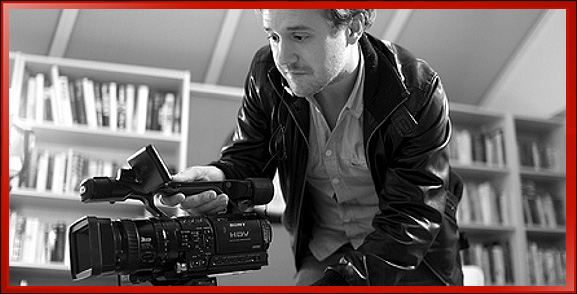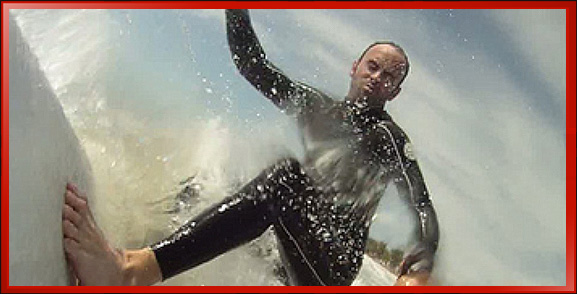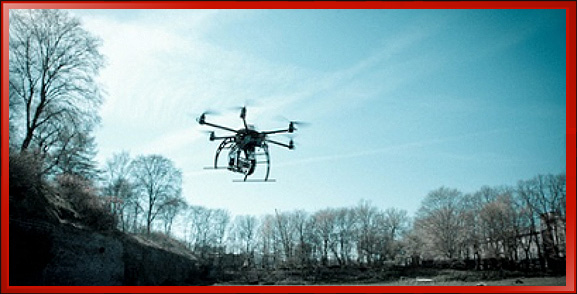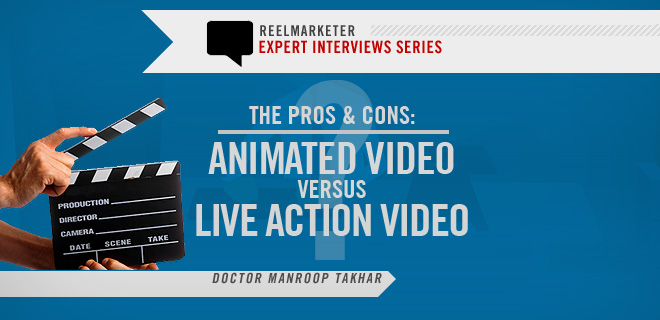Whether you choose animation or live action for your explainer or advertising video will have an impact not only on the final product but on your time and finances. Having decided you want to make a video, and being sure of the strategy behind it, you should bear in mind that the medium you use will also have an effect on the script and ideas generation right from the start.
When deciding on your approach, there are a host of things to consider, including your skills and strengths, your resources, and how much work you wish to outsource.
 Image courtesy of jsawkins, flickr
Image courtesy of jsawkins, flickr
I have been involved in making both animation and camera-shot video for a range of purposes, and both can be effective and offer loads of value whatever the motivation of your video is. Here are a few factors to keep in mind when making your decision.
Consider your Audience: When to Choose Animated Video
Animation is not just for kids; it’s well known that adults too enjoy the imagination, colour and diversity that goes into these creative videos.
Children and adults can find animation highly engaging, whether whiteboard, stop motion, 2D, 3D or whichever method you choose; but would your video benefit from a more human touch?
People can often resonate with human emotion in a video.
 Image courtesy of stevendepolo, flickr
Image courtesy of stevendepolo, flickr
Sometimes a friendly face and the personable characteristics of a person allow an audience to better relate to a topic. This can be a more effective medium for some political, social and business issues. A professional figure who is well renowned in your field or organisation can be an appealing face for a video message, distilling trust and authority. Likewise, featuring a famous personality can have immeasurable influence on any campaign.
But, remember, a pleasant and charming voice-over on an animation can be just as effective, and perhaps more endearing when matched with inspiring visuals.
Costs and Resources
The pros and cons of animation versus live action video for you will much depend on the in-house resources you have at hand. If most equipment and tasks will be out-sourced, then for a professionally done video, you’re probably looking at a similar cost for both an animated or live action video.
You could of course elect a more rudimentary course of action, using an iPhone to film sequences, or creating your own stop motion animation with plasticine, but the difference in quality of the final product compared to a professionally done video will likely be significant.
 Image courtesy of Wonderlane, flickr
Image courtesy of Wonderlane, flickr
For a camera-shot video, the costs of renting the filming equipment is a major cost, and then there is the consideration of whether you need to hire out premises, props and actors.
So, if you don’t have the experience in scripting, directing, filming, editing, lighting and the many other elements of a live video making process, then it may well be with your buck investing in a professional company to take on the project; thus, also saving you a lot of time and energy.
One relatively cheap and flexible way of making an independent video, however, is with a GoPro camera, which can be carried on the head or a variety of vehicles, and is a great way to record movement.
A GoPro camera can capture unique moments.
 Image courtesy of Gordontarpley, flickr
Image courtesy of Gordontarpley, flickr
Making your own computer animation could also be done, but again you would need equipment, this time in the form of a computer and software. If you don’t have good knowledge of the software then this can be a highly challenging and time-consuming task.
Other elements of animation include illustration, voice-over, music and sound effects. The overall time span for completing an animated video will vary according to length, and for an amateur this is likely to be many months. Like for a live action production, animation can be hired out. It just comes at a cost, which needs to be weighed up against these factors mentioned. Idea generation, scripting and creativity are crucial to the success of any video, so if these talents aren’t already held then you may want to consider sourcing out at least some part of the project.
Production Time and Changes for Animated Video Production
Generally speaking, for a video of the same length, an animation will take far longer to complete than a live action video. Everything from character creation to their animation will start from scratch, and revisions can be time-consuming.
 Image courtesy of Camilla Taylor, flickr
Image courtesy of Camilla Taylor, flickr
Meanwhile, live action scenes can be shot in a couple of days, with adjustments made there and then before editing. You are also allowed the freedom to improvise and divert slightly from your planned storyboard. However, making changes to a live action video after production can be costly, requiring re-booking of equipment, actors and so on.
Animation allows you to make last minute changes, which is one of the most attractive things about it. Changes to an animated video can even be made years after the first video was made, resulting in a potentially significant advantage if your company is always evolving.
Adaptations can be made to the video to coincide with company changes, so an entirely new video does not need to be made. And animated Explainer Videos are Timeless. If you feature a company executive in a live action video, that material will appear outdated in a few years’ time when his appearance might be considerably different.
Thinking Innovatively about Animated Promotional Video
Conjuring up an animated character and a fantasy world allows you endless scope for originality and novelty. For a video to be engaging, emotions need to be stimulated. And although viewers might relate better to human characters, they can also be captivated by the fantastical.
This ability to portray something that doesn’t yet exist, can be great for start-up companies that want to explain a service, or for any organisation that wants to clarify a complicated problem.
Animation can be a fast and effective way of explaining anything. So much can be illustrated in just a short scene. A whiteboard animation, for example, can take viewers strep-by-step through an intricate topic or link a series of diverse yet related scenarios in a concise way, and all in a short time.
A GoPro camera can take unique shots when placed in a helicopter.
 Image courtesy of VilleHoo, flickr
Image courtesy of VilleHoo, flickr
Creating a dramatic adventure scene could also be a lot cheaper to produce in an animation than in reality; but would it have the same effect for your purpose? If you’re a paragliding company, then a GoPro live video of mesmerizing views could be the way to go. So, now you are more familiar with the options available, it is up to you to decide which fits in best with your brand, strategy and needs.
Wishing you all the very best!
About the Author
Dr Manroop Takhar is the founder of Spiel Creative, a leading animation studio focused on creating engaging advertisements and explainer animations for organisations. See above to learn more about the studio how whiteboard animations can help your business.






[…] The Pros and Cons of Animated Video Versus Live Action Video […]
[…] Continued here: The Pros and Cons of Animated Video Versus Live Action Video […]
[…] live action production, but the reality of the situation revolves around the fact that animation is an artistic choice. The target audience of “Vixen” is more or less the same audience targeted by “Arrow” and […]
[…] The video is funny, it moves quickly, and uses live-action (as opposed to animation). […]
Animated videos are more catchy and easy to understand. I can say that animation style has become quite popular in the last few years and it seems that viewers react quite well to these types videos.
Hey, I totally agree. Animation is essential as it makes us have the ability to inform stories and communicate emotions and ideas in a completely unique, smooth-to-perceive way that each small children and adults can apprehend. Animation has helped join human beings at some stage. Nice article!